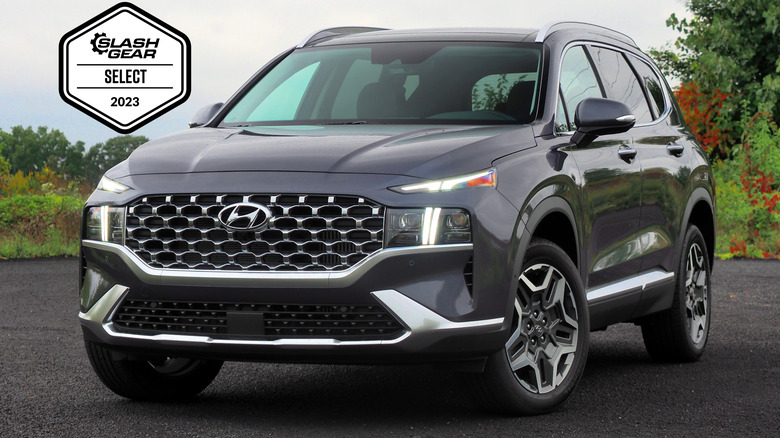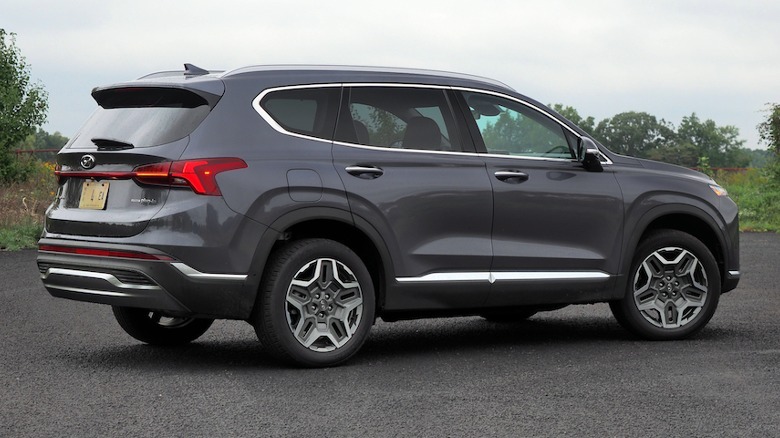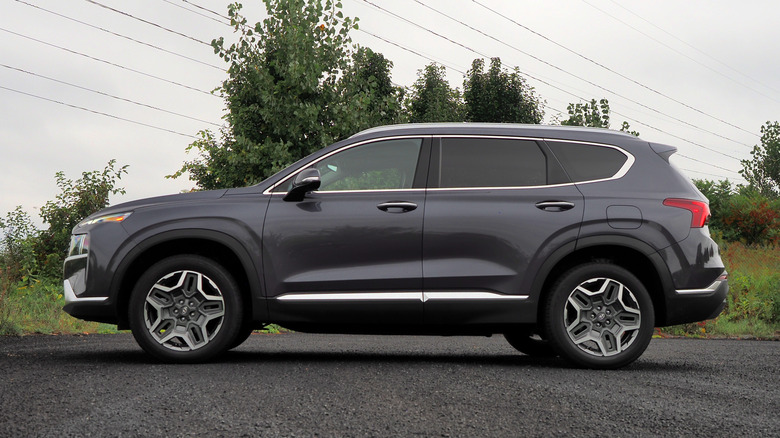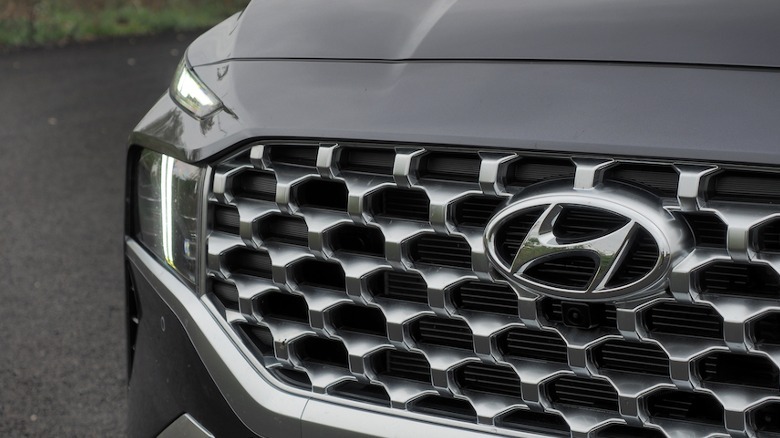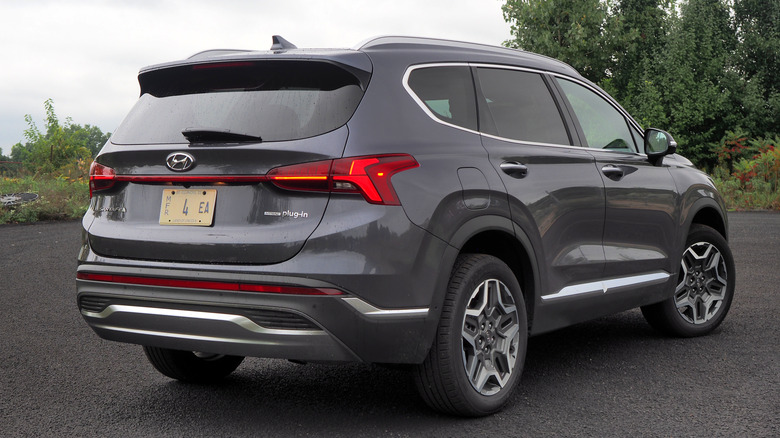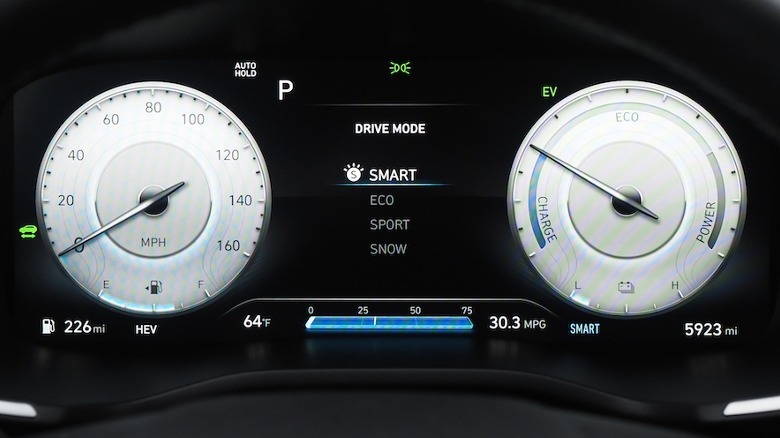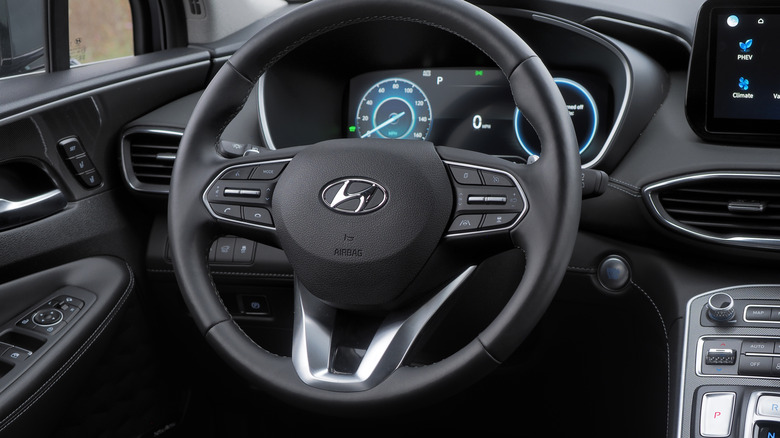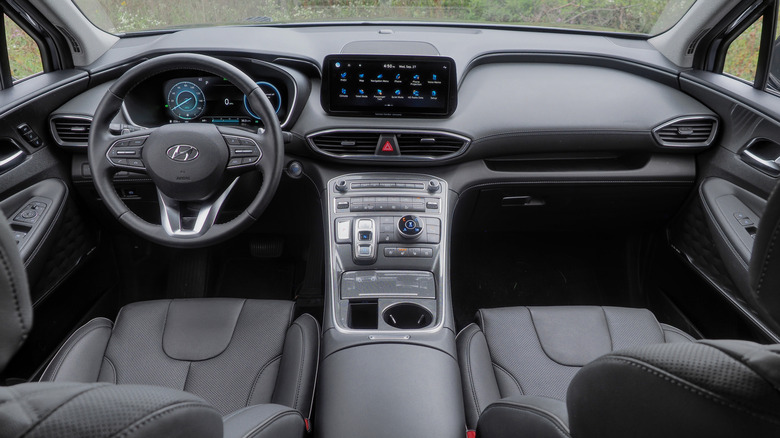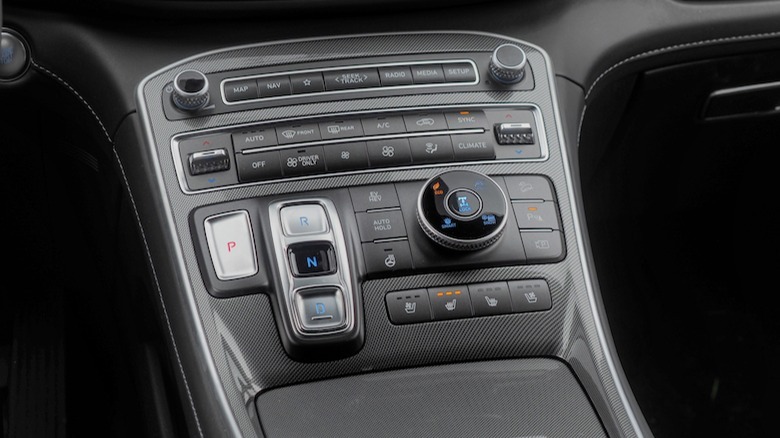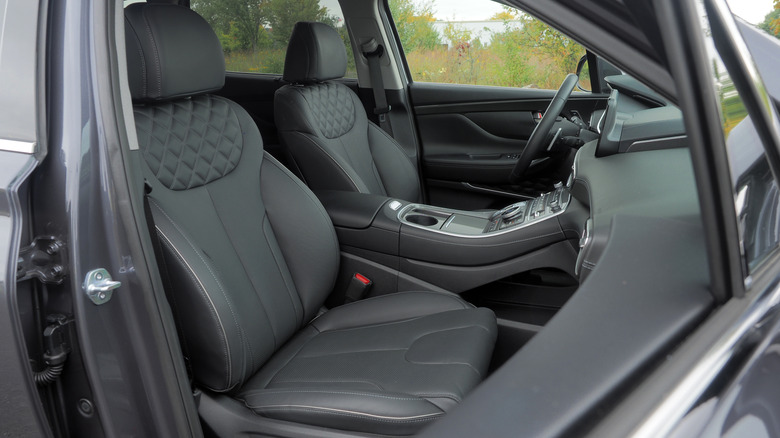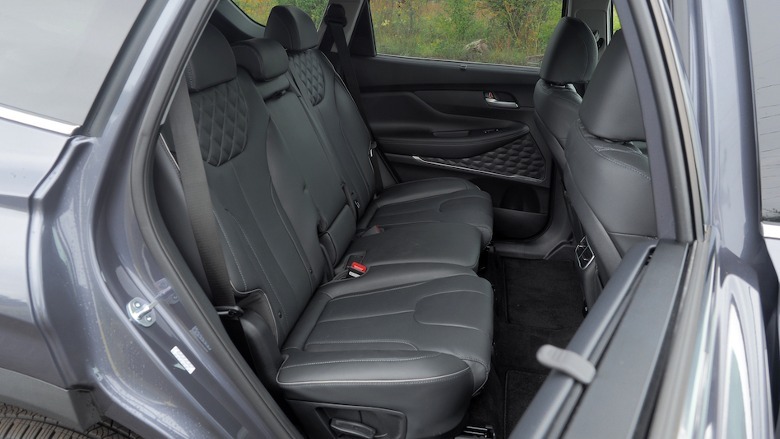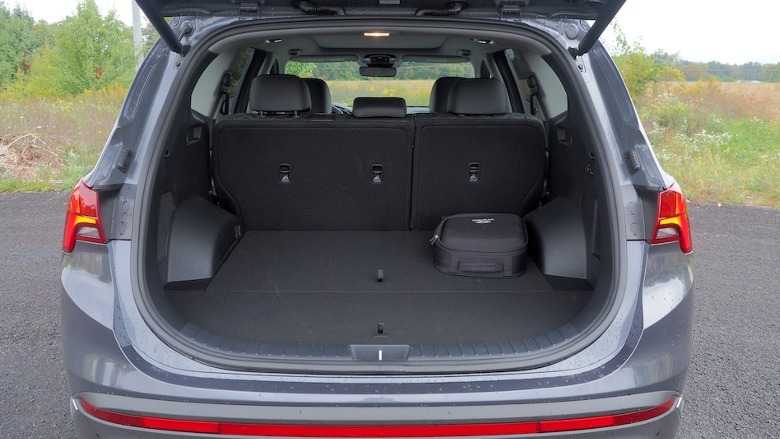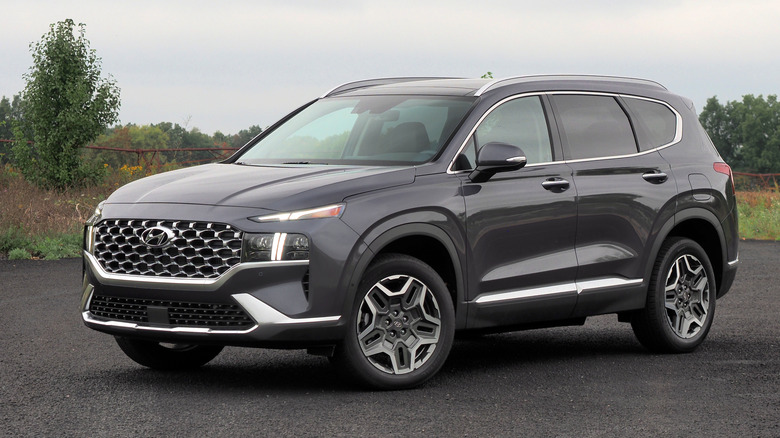2023 Hyundai Santa Fe Plug-In Hybrid Review: Paying The Price For Electric Range
- PHEV drivetrain is smooth and refined
- All-wheel drive comes standard
- Plenty of standard equipment
- Considerable price premium for going PHEV
- No uptick in tow rating versus gas Santa Fe
The 2023 Hyundai Santa Fe is a relative rarity in the SUV space: a single nameplate which is offered in gas-only, mild-hybrid, and plug-in hybrid form. While those looking for a full EV will have to wait a little longer for Hyundai's option there, it's nonetheless an impressive sweep depending on how willing you are to pay for the green and gas-sipping advantages of electrification.
Price is, of course, the big issue most people will get hung up on. A standard 2023 Santa Fe kicks off at $28,750 (plus $1,335 destination); the Santa Fe Hybrid tacks almost $7,500 onto that.
By the time you get to this 2023 Santa Fe Plug-in Hybrid, you're looking at $42,410 (plus destination), albeit with some niceties standard that you'd pay extra for on a base, gas-only model. With no U.S. federal tax incentive to take away some of the sting, is Hyundai's plug-in worth the outlay?
Two well-equipped PHEVs
Unlike the five-strong trim walk of the base Santa Fe, the PHEV comes in just two configurations: SEL Convenience and Limited (the latter from $47,370 plus destination). Both are exceedingly well-equipped, with all-wheel drive, 19-inch alloy wheels, a bigger infotainment touchscreen, a digital gauge cluster, and LED lighting front and rear.
Limited trim adds power-folding side mirrors, swaps the cloth seats for leather, adds some extra power adjustability to the front seats, and makes them ventilated, not just heated. There's also rear seat heating, a Harman Kardon 12-speaker audio system, heated steering wheel, and both a 360-degree camera and Hyundai's blind spot view monitor system, beaming a camera view of the adjacent lane to the 12.3-inch digital cluster display when you hit the turn signal.
Dual-zone HVAC, adaptive cruise control, a power liftgate, and acoustically laminated front glass are standard on both trims. Limited adds rain-sensing wipers, a panoramic sunroof, and a 115V AC outlet.
Gas plus electric equals green
They're features you'll pay handsomely for on the lesser Santa Fe models, but the biggest difference is the drivetrain. For the plug-in hybrid, Hyundai combines a 1.6-liter inline-four turbocharged gas engine with an electric motor and a six-speed automatic transmission. The result is 261 horsepower combined, which doesn't sound like a vast amount but still clocks in neatly above the 191 hp of the base 2.5-liter gas engine and the 226 hp of the mild hybrid.
With its 13.8 kWh battery fully charged, Hyundai and the EPA say that the Santa Fe Plug-in Hybrid should be capable of 31 miles of electric-only driving. Add a full tank of gas, and — with a 76 MPGe combined rating — the total range lands at 440 miles. A full recharge takes about four hours on a Level 2 charger; like with most plug-in hybrids, there's no compatibility with DC fast chargers.
Despite the extra grunt, Hyundai doesn't rate the PHEV version of the SUV for a higher towing figure: that remains at 2,000 pounds (or 1,650 if your trailer lacks brakes).
Perky, but the bigger turbo keeps its edge
From behind the wheel, electrification's perk leaves the Santa Fe PHEV feeling more eager at city speeds. The electric motor's 90 horsepower isn't vast, but its hefty 224 lb-ft of torque — arriving, as usual with EVs, all from the get-go — punches well above its weight, and the result feels spritely.
Much the same can be said for Hyundai's 2.5-liter turbocharged inline-four, mind, which is available on higher trims of the non-electrified Santa Fe. Figure on spending at least $43,635 (plus destination) for that, in all-wheel drive form, and paying a frugality penalty, too. The Santa Fe Turbo AWD is rated for 24 mpg combined; on gas alone, the PHEV is rated for 33 mpg combined, and in my own driving, I saw 30 mpg.
Push on, and that turbo engine is more engaging than the heavier PHEV overall. No great surprise, given there's a few hundred pounds difference on the scale.
A whole lot of buttons
Inside, the Santa Fe feels like old-school Hyundai, with none of the dashboard whimsy of models like the Ioniq 6. It's not ugly, but it's barely memorable either, and hopefully, you like buttons: there is a heck of a lot of them. The 10.25-inch touchscreen at the top — which supports wired Apple CarPlay and Android Auto — does plenty. Then Hyundai adds a row of infotainment shortcuts, another of HVAC controls, and then a bevy of drive mode buttons underneath.
The switchgear all feels sturdy, with good quality plastics, but you'll definitely be looking down to figure out where the right button is. A more obvious way to switch between fully electric and hybrid modes would be nice, too, versus the unobtrusive key sandwiched between the transmission selector and the drive mode dial.
Usually, the Santa Fe PHEV makes its own decisions about when to use gas or electric power. The transition is fairly unobtrusive, though the gas engine isn't quite the quietest out there. Unlike some plug-in hybrids, there's no way to manually force the SUV to recharge the battery from the gas engine, though since that's generally less economical than just using gas power alone, it's probably no great loss.
Plenty of active safety tech as standard
There's little in the way of passenger compartment compromise for opting for the plug-in hybrid. Space in both rows is fine — the PHEV does dip a little in rear-seat legroom, compared to the non-hybrid, but it's still plenty — and the trunk remains 36.4 cubic-foot with the split rear bench up, or 72.1 cubic-foot with it down.
Hyundai's standard safety technology package is am,ple too. Both Santa Fe PHEV trims get Highway Driving Assist (HDA), which neatly blends adaptive cruise and lane-keeping assistance, along with blind-spot collision avoidance assist, rear cross-traffic collision avoidance assist, and forward collision avoidance assist with pedestrian, cyclist, and junction-turning detection. There's also lane-following assist, auto high beams, and rear parking sensors.
Limited trim adds front parking sensors, along with remote smart parking assist: you can pull the Santa Fe Plug-in Hybrid in and out of a spot from the key fob. Clever? Sure. More than a gimmick? Not really.
2023 Hyundai Santa Fe Plug-in Hybrid Verdict
Far more notable is the warranty. As well as the five-year/60,000-mile standard warranty, 10-year/100,000-mile powertrain warranty, and 10-year/100,000-mile coverage for the hybrid battery alone. Hyundai also throws in five years/unlimited miles of 24/7 roadside assistance.
As always, a plug-in hybrid works out best if you, well, plug it in. The value, economy, and performance equation only delivers if you're making ample use of the Santa Fe PHEV's electric capacity; otherwise, you're just driving a heavier version of the SUV around and missing out on the benefits that blending gas and electric can bring.
Those who don't have parking at home within reach of an outlet, then, should probably look to the non-plug-in Santa Fe Hybrid instead. A mild hybrid may not be able to do the same EV-only wafting, but a Santa Fe Hybrid Blue (from $36,210 plus destination) is rated at 34 mpg combined and can do over 600 miles on a full tank of gas.
In short, no single electrification option is right for every driver, and that's where the Hyundai Santa Fe shines. Having options, after all, can only be a good thing.
